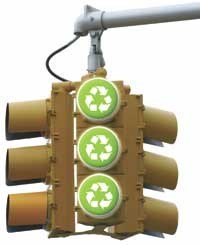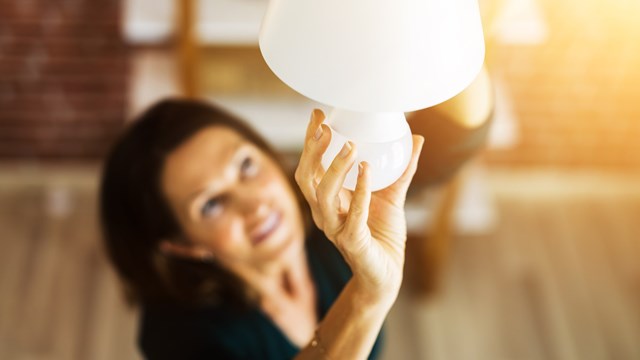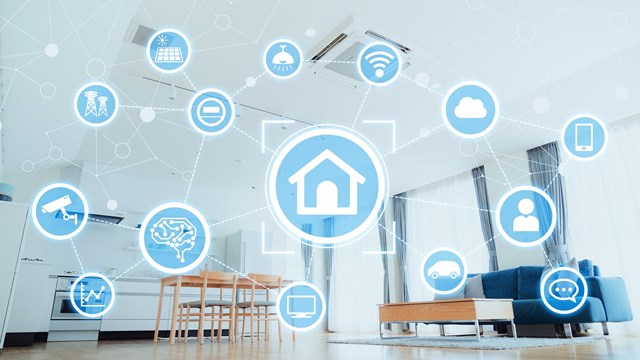
Green truly is the new black in South Florida. As more and more condos and HOAs look to save money as expenses rise, more and more boards and unit owners are exploring ways to incorporate “greening” into their building community.
Green homes are expected to grow between 29 percent to 38 percent of the residential construction market by the year 2016, which is equal to $87 billion to $114 billion of that market, according to a 2012 McGraw Hill Construction study.
According to the U.S. Green Building Council, whose Leadership in Energy and Environmental Design program is the gold standard, the residential market—from multi- to single-family, from market rate to affordable housing, is reaping the benefits of using green building techniques. Since the launch of LEED for Homes in 2008, more than 30,000 homes have received LEED for Homes certification and nearly 93,000 are registered for certification. Over half of all LEED-certified homes are in the affordable housing category, the USGBC says.
And cities and towns are getting on board, too. There are 44 certified and 58 registered Florida Green Building Coalition Local Government-designated cities and counties in the Sunshine State, according to Suzanne B. Cook, the FGBC executive director.
As of the fall 2012, 201 homes in Florida are LEED-certified. Cook says more and more communities are trending towards green alternatives. She says there is interest in green, “mainly because of the cost reductions that green building offers, whether it is with water conservation or energy conservation. Those are the two big issues that people relate to green building, although green building has a much broader range than just energy and water. It’s about the health issues. Maybe a homeowner could specify low VOC paint or that type of thing.”
Green buildings are known for having cleaner air and using more environmentally-sound materials.
Emerging in South Florida
Although slow to adopt and having no green-certified buildings until 2009, South Florida has jumped on the green bandwagon and now has 200 LEED-certified buildings.
One area that has gotten a little greener these days is Miami, according to Sandra Dominguez, a licensed real estate agent with Rutenberg Realty, which has offices in New York City.
“Miami is making great strides in going greener with the Miami Green Committee and the Miami Green Lab,” says Dominguez. “Consumers are demanding the lifestyle and developers and property managers are paying attention. Residential buildings are moving towards that, but single-family homes are really leading the way in LEED design. New developments are also going green with them incorporating LED lighting, recycling requirements and windows that retain cooling. Brickell is the neighborhood leading the green way with a strong movement in the residential and commercial market to go green. I’m also seeing buildings competing to be LEED certified,” she says.
There are multiple benefits and residents want to live in green buildings because they’re healthier, more energy-efficient, and have greater resale value. “It is a great benefit,” says Dominguez. “Going green is a definite plus to the wallet on the front end and the back end of an investment. I have over 20 years of experience in the real estate market and in South Florida a single family home will sell 10-15 percent higher if it has energy saving amenities such as solar panels, energy efficient windows and doors, toilets, etc. and this has crossed over to the commercial, residential condo, and rental market.” Dominguez believes the attraction will continue. LEED-certified buildings with lower operating costs and better indoor environmental quality are more attractive to a growing group of corporate, public and individual buyers, she says. High performing building features increasingly enter into tenants' decisions about leasing space and into buyers' decisions about purchasing properties and homes. There is a definite increase in occupancy, she adds.
It is also a valuable option for both cost savings and resident satisfaction, Dominguez says. “LEED-certified buildings provide immediate and measurable results for building managers and occupants. Controlling energy and water use is a critical tactic that is saving companies millions of dollars, year over year, simply by reducing costs through saved energy, water and other resources.
“The greening of an existing or new building can reduce operating and maintenance costs, optimize capital expenditures, increase efficiency, extend the life of buildings and building systems and minimize negative impacts on the environment in terms of energy and water use, consumption of natural resources, and pollution. Lower operating costs and easy maintenance of green buildings can also contribute to lower vacancy rates and higher property values.”
Benefits of Going Green
While it’s common for buildings or associations of any size to have designated committees in place to help boards and management handle aesthetic, social and other community concerns, ‘green’ committees are emerging as a more recent trend throughout South Florida and across the country as environmental consciousness is raised.
Green committees are similar to any other building committee in the sense that they’re typically a group of residents who are voted into the committee to help with a common goal. In the green committee’s case, the goal is creating an eco-friendly building environment that can influence everything from the paint choices they use when painting the common areas to creating, installing and maintaining a green roof for the building.
A 2003 California study on sustainable development in that state analyzed specific cost benefits for going green. The study said, “The financial benefits of green buildings include lower energy, waste disposal, and water costs, lower environmental and emissions costs, lower operations and maintenance costs, and savings from increased productivity and health. These benefits range from being fairly predictable (energy, waste, and water savings) to relatively uncertain (productivity/health benefits). Energy and water savings can be predicted with reasonable precision, measured, and monitored over time. In contrast, productivity and health gains are much less precisely understood and far harder to predict with accuracy.”
What You Can Do
Recycling, energy and water conservation, composting and improving landscaping techniques and methods are just a few of the things green committees may devote themselves to working on—and often, there are local and state-sponsored organizations and resources to help them achieve their goals.
“It’s important for homeowner associations to prioritize with a green committee because minor tweaks to a building can greatly improve its performance,” says Grace Lunsford, owner and managing director of Green Dream Group, an organization based in Chicago that strives to make buildings more eco-friendly.
Residents can get involved with their community in a positive way by starting a stand-alone green committee and also help the planet at the same time. One of the first—and easiest—ways that the green committees encourage residents to get involved is through your city or statewide recycling program.
A 75 percent recycling goal throughout the state has been mandated by the Energy, Climate Change, and Economic Security Act of 2008 (House Bill 7135) that was signed into law by former Governor Charlie Crist. The deadline for achieving this goal is the year 2020. Under the law, recyclable materials shall include, but are not limited to, metals, paper, glass, plastic, textile, rubber materials and mulch.
It’s not only recycling however. Unit owners, boards and management groups have found that many of these eco-friendly measures are also cost-saving strategies as well.
Dominguez says there are many things boards and residents can do on their own. Some ideas include installing high-efficiency heating and cooling equipment: Well-designed high-efficiency furnaces, boilers, and air conditioners (and distribution systems) not only save the building occupants money, but also produce less pollution during operation, she notes. Secondly, you can install high-efficiency lights and appliances: LEED Lighting, fluorescent lighting has improved dramatically in recent years and is now suitable for homes as well as office buildings. High-efficiency appliances offer both economic and environmental advantages over their conventional counterparts.
Other options, Dominguez adds, are to install water-efficient equipment: Water-conserving toilets, showerheads, and faucet aerators not only reduce water use, they also reduce demand on septic systems or sewage treatment plants. Reducing hot water use also saves energy. Mechanical ventilation equipment that is installed will also ensure safe, healthy indoor air.
Residents as environmentally-conscious to live in a green building will also be early adopters of recycling waste, says Dominguez. “Make it easy for occupants to recycle waste. Install automated recycling disposal within trash chutes. Make provisions for storage and processing of recyclables for all residents and employees.”
Get the Board on Board
While residents may take the lead, it’s up to management and the board to be as supportive as possible of green initiatives.
The key in whatever they do is to create programs the green committee and the board are committed to implementing. Then create programs that can be easily incorporated into the daily lives of the homeowners, provide support for questions and educate the importance and the impact everyone can make.
Once one or two people decide to form a green committee, they can turn to the state to see if any incentives are available to help.
If your green committee is looking for a more holistic approach or a green building certification, then they can get help from the three most popular building certifications: LEED with the U.S. Green Building Council, Green Globes or Energy Star. Currently, Energy Star does not have a multi-residential certification, but is expected to have one in 2013. Energy Star is also focused on energy only, rather than complete sustainability. LEED and Green Globes look at all building components in addition to other eco-friendly moves such as air quality and landscaping.
Less is More
Another way condo boards and residents can help the environment is by greatly reducing their paper and waste streams. A new online-based service called “My Green Condo.net” can help in that regard, according to co-founder and business development manager Ranjan Sankarasivam. The New Jersey-based company is targeting homeowner and condo associations around the country and internationally to help boards, managers and residents become greener citizens.
The company’s vision, he says, is to “create a distinct online global residential platform that brings together residents (owner/tenant), property management, board members, vendors and associations while reducing operating costs, increasing transparency, enabling flawless communication, eliminating manual/paper processing and promoting a green environment.”
The way we look at it, there are many ways one board member or board members can contribute to green, he says. One example is solar power, or green waste management, or you can help by eliminating paper, that’s where we focus on, he says.
“In establishing a committee, a committee obviously will look at ways for greening. But what I can talk about is eliminating paper, because paper is a big, big part of keeping green in any community,” Sankarasivam says.
Both boards and property managers handle a lot of paper on a daily basis, whether it is leases or contracts, work requests or order forms, bylaw amendments or house rules, he says. Property managers are constantly sending out faxes, collection notices, work order requests, notices about landscaping or ongoing painting projects, and more. “There are a lot of papers that get circulated.”
Sankarasivam says his business can help with that. “So what we do is that we have 40 different functionalities in our online application. For property management, that will help eliminate completely every paper within the building and also every property management operation associated with the building. We offer things like e-fax, e-signatures, sell tickets or collect money online. We offer Microsoft Share Point, that allows board members and committees and vendors working on electronic documents to manage them in electronic form, and provide links that can be used to share with people in email.”
Sankarasivam says, “This obviously promotes green and there are many subsequent benefits attached to it. Three main benefits: One of them is a substantial cost savings. One of it is no more paper, memos, contracts, faxes, that saves you money—a paper reduction, no fax machine, no filed paperwork or storage. You don’t have to keep files.”
But not everyone has access to computers, email, or is conversant with computer lingo, especially older residents, he notes. To encourage adoption of online resources, he recommends that boards provide the access themselves. “In today’s day and age, every place will have an Internet connection. The challenge is always, what type of community? In some of the elderly communities, what we always do is encourage every building who is our client to put a computer in the common areas of the building. And then you have everybody walking by and come into the common area and they sign in with a user name and a password. That’s really worked well. You have a selection of people who can’t do this and the board can make a decision to do paper-based mailings specifically for them,” he says.
“The idea of automation that always gets shuts down is that there are people out there that can’t use it. It’s a different mindset. That’s where we actually can make a difference. We can show that there’s a cost savings for doing this.”
Sankarasivam said this service also promotes continuity, as all the community documents, whether they are bylaws/house rules, administrative operations, management forms, residential leases, etc., can be stored digitally, and will be there for future generations. Board members change, management companies change, unit owners change, but the building’s institutional memory and recordkeeping will remain intact, he says. MyGreenCondo, Inc., which was founded in 2011, will do a case study and provide a cost benefits analysis to any condo community or HOA looking to automate their building operations.
“When we go to an association, we prove to them that our cost is minimal to the comparison that the cost savings they are going to achieve,” he says.
It Just Takes One
So while you may not have your own green committee, you can always encourage recycling when the board is speaking about garbage choices; ask about energy efficient light bulbs the next time someone runs to Home Depot to replace the current light bulbs; and before grabbing a bottle of Windex to clean the tables in the lobby, you can ask the board to switch to a more ecofriendly, natural cleaning solution.
It only takes one or two or a handful of residents per building to form a green committee but doing so can make real changes to your homes, the planet and your community’s bottom line.
Danielle Braff is a freelance writer and a frequent contributor to The South Florida Cooperator. Managing Editor Debra A. Estock contributed to this article.






Leave a Comment